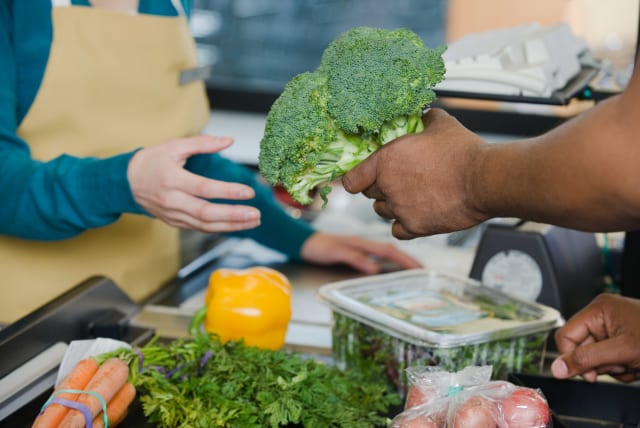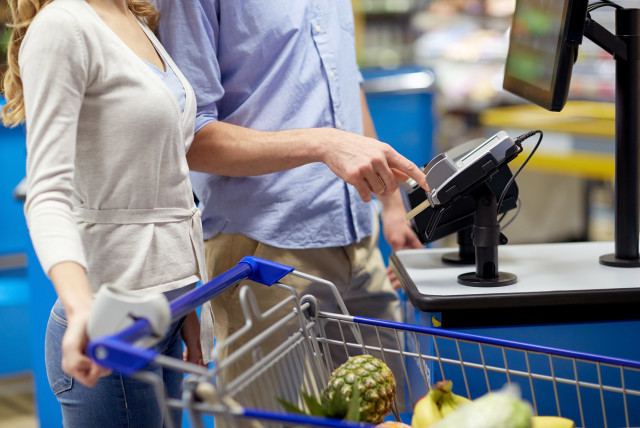Greater store loyalty in customers who use regular checkouts rather than self-checkout - study

The findings could help inform retailers on whether they should install or remove self-checkout systems and how to manage the self-checkout systems better to ensure positive customer experiences.
Many supermarket managers – including many in Israel – are replacing many checkout counters with human cashiers with self-checkout counters, thinking that the innovation not only saves them money on manpower but is also appreciated by customers by shortening queues.
Technological advancements in the past decade have revolutionized the interaction between companies and customers. One major factor that has dramatically changed how customers interact with companies is the use of self-service technologies.
However, it turns out that they may be mistaken, at least according to a new study at Drexel University in Philadephia. There are many advantages and disadvantages of self-checkout for both the customer and the retailer, but until now, little formal research has investigated the impact of the innovation on customers’ shopping experience.
How does self-checkout influence customer loyalty?
This led researchers from Drexel University’s LeBow College of Business to look at how self-checkout systems in grocery stores influence customer loyalty compared to regular checkout systems.
Marketing Prof. Yanliu Huang and former Drexel graduate student Dr. Farhana Nusrat, now an assistant professor at the University of San Diego, conducted five studies that showed customers are more likely to remain loyal to the grocery store when using regular checkout service.
They found loyalty is shown by an increased likelihood of returning to the store in the future. These findings and the full study were recently published in the Journal of Business Research under the title “Feeling rewarded and entitled to be served: Understanding the influence of self- versus regular checkout on customer loyalty.”
Huang and Nusrat established that the perceived ease of checkout and a sense of entitlement played a role in explaining the effect of loyalty. They also noted the number of items purchased during the shopping trip also affects how the type of checkout influences customer loyalty.
“Our findings indicate that self-checkout systems, despite their advantages in terms of speed, ease of use, and cost reduction, can result in lower customer loyalty compared to regular checkout systems, especially when the number of purchased items is more than 15 items,” Huang said.
Specifically, they noted that the perceived saved effort during the checkout process and the customers’ sense of entitlement explain the effect of checkout type on customer loyalty.
The extra effort required to checkout and bag purchases and the expectation of being served by the store were negative consequences of self-checkout and decreased loyalty to the store.
However, when shoppers viewed the extra effort in self-checkout as a rewarding experience, their store loyalty matched that of regular checkout shoppers.
Study result shows normal checkout is better for customer loyalty
Huang and Nusrat’s research integrated five studies of data collection through crowdsourcing platforms. In the first study, they surveyed people who reported grocery shopping within the last seven days about their most recent grocery shopping trip and were asked to indicate which checkout method they used, followed by customer loyalty questions. This study showed that regular checkout customers reported higher loyalty to the store than self-checkout customers.
In the second, third, and fourth studies, Huang and Nusrat used hypothetical scenarios to have participants imagine that they took a grocery shopping trip to a supermarket and made purchases.
In the regular checkout condition, participants were told that a cashier helped them at the checkout counter with the scanning and bagging process. In the self-checkout condition, participants were told that they scanned and bagged all items themselves at checkout. Then participants were shown a screen displaying the price of some items and the savings made.
Results from the third study showed that the customers’ perceived saved effort during the checkout process and their sense of entitlement explained the effects of the checkout system on customer loyalty to the store.
The fourth study found that the effect of checkout type on customer loyalty would most likely happen for a large number of purchases when the number of items bought during a shopping trip is greater than 15.
In the fifth study, they introduced an intervention by encouraging participants to associate the extra effort involved in self-checkout with rewards. Specifically, in the first stage, participants who indicated that they would visit a supermarket or grocery shop within the next five days took part in the study and were randomly assigned to read either a neutral passage about trees or a passage about how self-completing a task that requires effort can make them feel accomplished and rewarded.
The purpose was to influence participants’ perception of self-checkout, making them think of the extra effort involved in self-checkout as rewarding and satisfactory. Participants were then asked to go grocery shopping within the next five days, upload the receipt of that shopping trip, indicate which checkout method they used, and answer store loyalty questions.
“We found that when customers were encouraged to think of the extra effort involved in self-checkout as a rewarding experience, their perceived loyalty to the store was similar to those of regular checkout shoppers,” said Huang.
The researchers said their work could help inform retailers on whether they should install or remove self-checkout systems and how to better manage the self-checkout systems to ensure positive customer experiences.
The researchers added that there is room for similar studies to broaden the focus on other types of stores, including those selling clothing, home improvement, and luxury items, as well as other forms of self-service technologies, such as self-checkout with RFID, scan-and-go apps, smart carts, and self-service kiosks to measure customers’ experience.
Jerusalem Post Store
`; document.getElementById("linkPremium").innerHTML = cont; var divWithLink = document.getElementById("premium-link"); if (divWithLink !== null && divWithLink !== 'undefined') { divWithLink.style.border = "solid 1px #cb0f3e"; divWithLink.style.textAlign = "center"; divWithLink.style.marginBottom = "15px"; divWithLink.style.marginTop = "15px"; divWithLink.style.width = "100%"; divWithLink.style.backgroundColor = "#122952"; divWithLink.style.color = "#ffffff"; divWithLink.style.lineHeight = "1.5"; } } (function (v, i) { });

